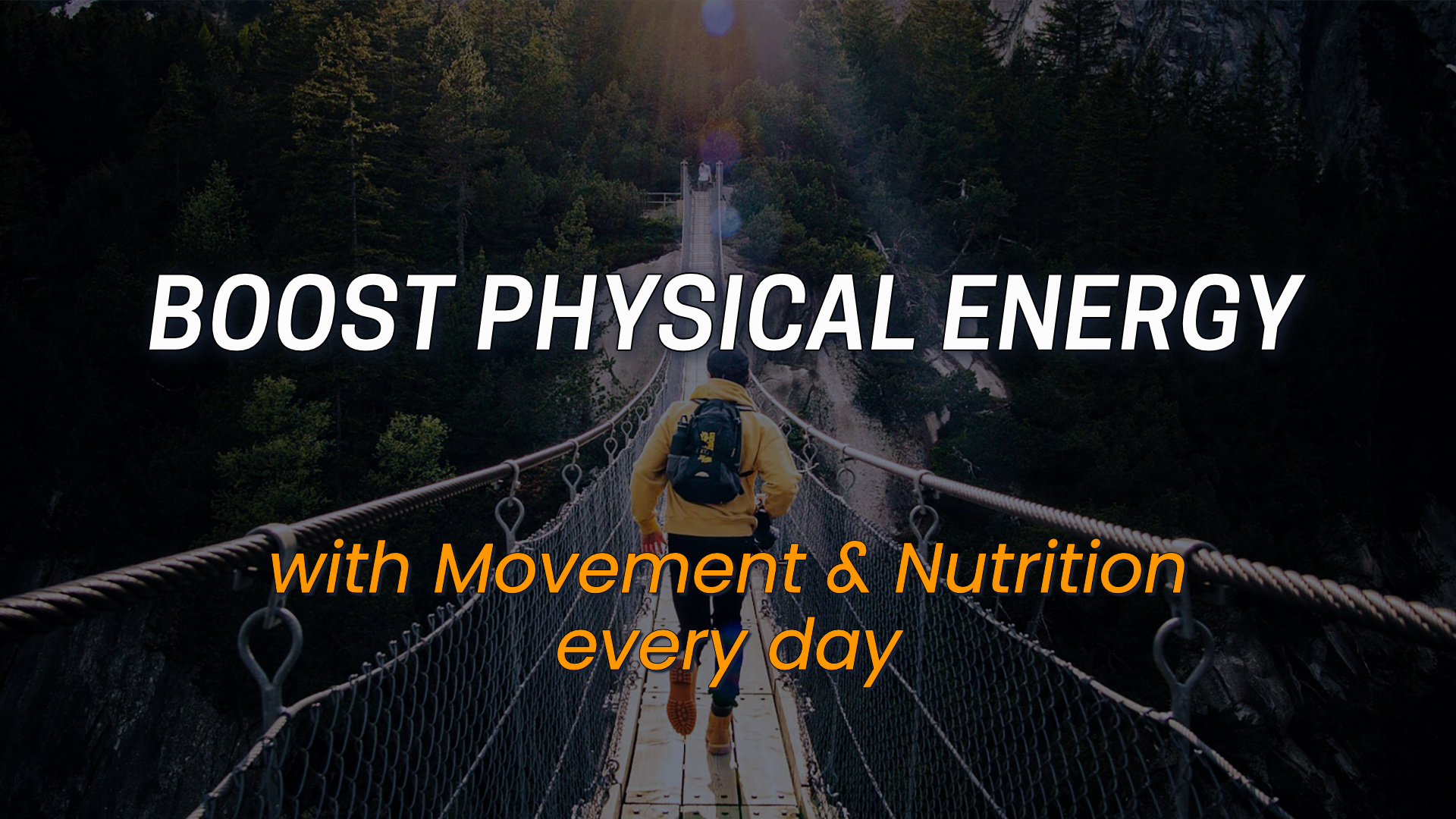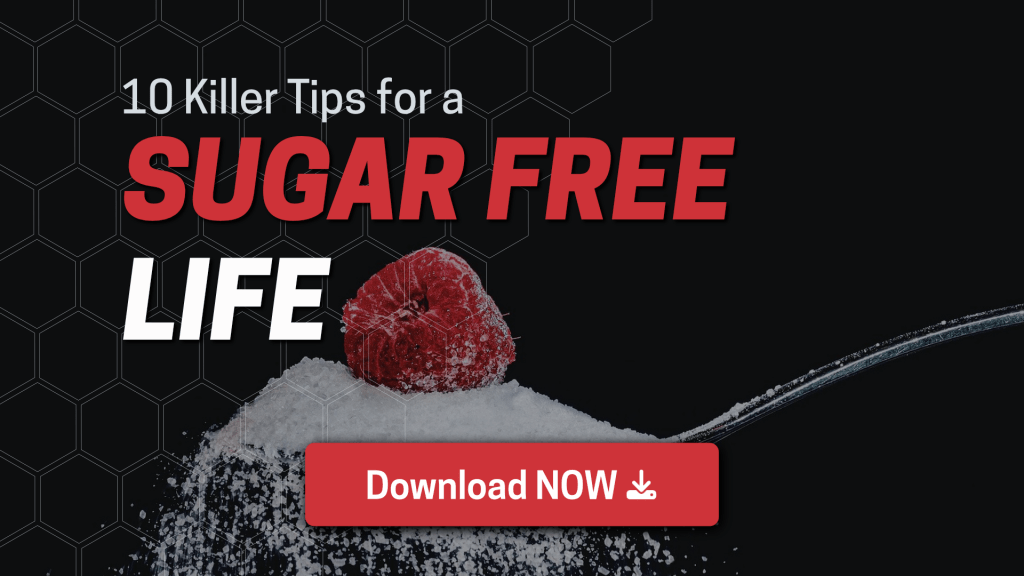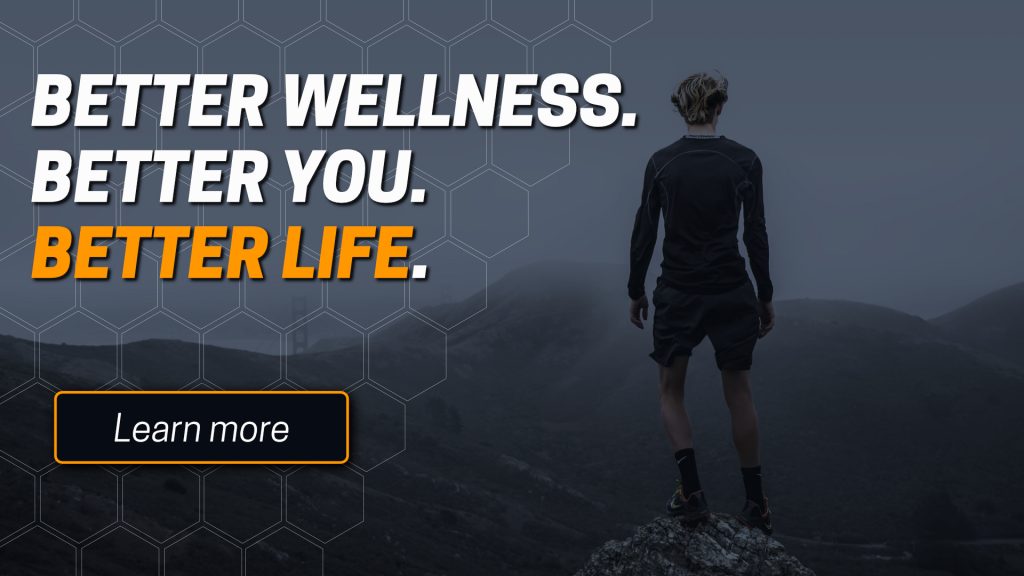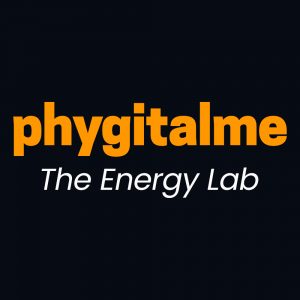It’s winter in the northern hemisphere. The rhythm of nature.
The days are dark and cold. Everything feels low and slow.
You crave to boost physical energy and feel better.
The rain looks like a grey wall and makes you freeze to the bone.
It feels so much better to stay inside—warm, cozy, and comfortable.
You don’t even want to go out there.
Lucky you if you live on a tropical island—Lombok, or Bali for example.
The Christmas holidays are just over and seasonal fatigue knocks at the front door.
We all know the fact that
with shorter days, colder temperatures, and little sun exposure,
it’s natural to crave more time in bed (or on the couch).
You may feel tired, groggy, and sluggish all day long.
Whereas you know that this is quite normal you don’t wanna feel like that.
It is important and necessary to embrace the downtime of winter to refocus, recap, and regenerate.
Taking the time to reflect on what is important to you in life and recharge your energy tanks to tackle the new year with renewed energy.
At the same time, you might ask yourself
“What can I do when feeling low?”.
What influences your personal energy level?
We, humans, are complex beings—and personal energy is not a simple topic.
Your energy level depends on different factors like
- the weather and your environment (urban or natural, bright or dark, etc.)
- your social eco-system (happy and content family & friends or naysayers and complainers)
- your mental and emotional constitution (do you have a positive or negative outlook on yourself and the world?)
- your physical constitution (fitness and health, sleep, right fuel, etc.)
Your physical, mental, emotional, and spiritual energy are interconnected.
All different aspects contribute to your holistic well-being—and to fully charged battery levels.
Today we concentrate on the physical aspect to boost and optimize your energy.
To be more specific—how movement and nutrition can boost your energy.
How do movement and nutrition create more energy?
Boost physical energy with Movement
If you feel tired—move. To be more precise—exercise.
It seems paradoxical and counterintuitive but exercise won’t make you feel more tired. Moving more can provide you with additional energy through a variety of mechanisms.
To begin with, while you work out, your body goes through cellular changes. Your body produces more mitochondria inside your muscle cells as a result of exercise.
Since they produce energy from the glucose contained in food and the oxygen in the air you breathe, mitochondria are referred to as the “powerhouses” of cells.
The level of energy in your body rises as you have more of them.
Additionally, exercise increases the flow of oxygen throughout your body. This boost in oxygen not only helps the mitochondria produce more energy but also improves overall function and energy use.
Plus, exercise raises neuro-modulator levels, which energizes you and gives your body a boost.
Regular exercise promotes healthier nighttime sleep in addition to assisting your body in producing and utilizing energy.
Deep sleep is essential for your general health and for waking up feeling relaxed and energized.
Boost physical energy with Nutrition
The food you eat fuels your energy directly. It can boost your physical energy, or it can drain it.
Every day, your body does something amazing: it takes the food you eat and turns it into energy. All you have to do is eat and enjoy it!
The process of eating is a primary and natural part of the energy transformation that powers your body to function.
And everything that goes beyond the vital functions requires additional energy.
We go from surviving to thriving, according to the inputs (both quality and quantity), we give our bodies.
The so-called “cellular metabolism” is responsible for converting nutrients into the cellular energy currency: ATP.
Your body contains all the raw materials needed to produce ATP.
Food contains proteins, fats, and carbs that can be changed into ATP. ATP is then broken down to create heat and energy, which can be used to make more ATP—and repeat the process again and again.
Energy can be transformed from one form to another, but cannot be created and destroyed.
There are different complex processes that our body accomplishes for us to be able to thrive in our daily lives.
Learn how to support processes and give your body the best food for energy.
5 specific concepts to boost physical energy with movement
We don’t wanna bullshit you with theory only—we also provide you with practical ways to implement and use this piece of information.
Here are five specific concepts and principles that support the boost of physical energy—all related to movement and exercise.
Raise your dopamine level
What it is
Dopamine is known as the pleasure hormone.
At the same time, it’s the neuro-modulator for motivation, mood, attention, pain processing, and movement.
Why it works
Dopamine levels will rise as a result of activities that make you happy. These include physical activity, meditation, massage, and sufficient rest.
Regular exercise gradually changes the reward system, increasing dopamine levels in the blood and the number of dopamine receptors that are accessible.
More motivation = more energy.
How to use it
Since it’s linked to your internal reward system it is also linked to neuroplasticity and active learning.
Going from simple exercises to complex movements and learning new motor skills.
Juggling is a great example of a motor skill. Body weight exercises are another.
Nose-breathe with movement
What it is
Breath is life. Breath is energy.
Efficient oxygenation of muscles, organs, and tissue not only saves energy. It makes your body more efficient and prone to better performance.
Why it works
The amount of carbon dioxide (CO2) in your blood dictates how much oxygen your body can utilize. CO2 is the main factor that causes red blood cells to release oxygen for the body to metabolize. This is called the Bohr Effect.
The higher your CO2 tolerance the more efficiently your body will utilize O2.
How to use it
The easiest way to start is only using your nose for breathing at any time and in any given situation. Nose breathing through exercise or running will not only limit your level of exhaustion.
It functions like a form of high-altitude training.
Utilize the SAID principle
What it is
In the body, the SAID principle rules all.
It is a simple acronym that stands for Specific Adaptation to Imposed Demands.
Franklin Henry proposed this concept in his hypothesis on motor learning.
It applies to all subsystems within the human system including the muscles, nervous system, connective tissue, and more.
Why it works
When the human system (body, mind, emotions) is placed under some form of stress, it makes adaptions to withstand that form of stress in the future.
This doesn’t occur in any single one mechanism—it’s a general tendency.
You can train it deliberately through progressive overload and conditioning. It is the trinity of physiological, neuronal, and hormonal adaptation.
This general adaption mechanism leads to greater energy reservoirs too.
How to use it
This is the basic principle for any form of progressive physical training. Resistance training will result in increased strength, muscle size, and connective tissue integrity.
Simulated high-altitude training and breath-hold training will increase red blood cells and result in more efficient oxygen utilization.
Deliberate heat or cold exposure—like sauna or ice bath—will also train your “grit muscle” apart from numerous physiological benefits such as building a better immune system, faster temperature adaption, and more.
Improve sleep through movement
What it is
Sleep is the best hack nature invented to restore our energy reservoirs—in the body and the brain.
Reaping the benefits of 7-8h of good restful sleep is vital for a fit and healthy body and mind.
Especially during deep sleep phases earlier at night, the body regenerates and repairs damages.
Why it works
Exercising regularly can improve your sleep quality and reduce daytime sleepiness.
It can also help alleviate symptoms of insomnia and sleep apnea, and increase the amount of time spent in deep, restorative sleep.
Exercising vigorously gives you the best sleep benefits.
Even light exercise like walking for 10 minutes each day can help improve your sleep quality.
How to use it
Exercise boosts metabolism and hormones like cortisol, but avoid vigorous workouts close to bedtime. Try to finish them at least 3 hrs. beforehand.
Low-impact exercises like yoga or stretching in the evening can help promote sleep, but it can take several months to see the full effects.
Focus on building an exercise habit that sticks.
Release fascial blocks for physical efficiency
What it is
Fascia is a connective tissue that surrounds muscles, bones, and organs, providing support and protection.
It is made up of different layers, including a network of collagen fibers (superficial fascia), dense connective tissue (deep fascia), and loose connective tissue (visceral fascia).
Why it works
Tightness or constriction due to trauma, repetitive movements, and inactivity can lead to pain, decreased mobility, and decreased range of motion.
Fascial tissue holds everything together and in place.
It is the body’s system for elasticity and plasticity.
Muscular weakness, imbalance, or joint instability can lead to a tightening of fascia and an inefficiency of strength and power output.
How to use it
Self-care practices like stretching, foam rolling, and self-massage help to take care of your fascia and improve physical efficiency.
These practices help to release tension, reduce pain, improve mobility, and ultimately increase your energy levels.
Concentrate especially on areas where muscles intersect or the muscle endings.
5 specific concepts to boost physical energy with nutrition
Eating a healthy, balanced diet is important for providing the body with the necessary fuel to maintain energy levels throughout the day.
Here are 5 key elements associated with nutrition that can help to increase physical energy levels.
Improve energy with Glycemic Index (GI) and Glycemic Load
What it is
The Glycemic Index (GI) is a ranking system for carbohydrate-based foods, with a scale ranging from 0 to 100.
The main factor used to determine the ranking is the extent to which the food increases blood sugar levels after consumption.
100 is the glucose level, used as a reference for any other carb.
Why it works
The glycemic index has limitations: this kind of ranking only refers to the type of food, without taking into consideration
- the portion size (effect of the GI value)
- the combination of foods (which influence the overall GI)
Consider food based on its glycemic load, calculated by dividing GI value and quantity by 100.
This gives you a more precise idea of how the food you eat impacts your insulin level, but still, it does not consider the combination of foods you are eating together.
How to use it
To boost your energy limit the amount of high-GI foods you eat, and when you do, pair them with a good source of protein.
Let’s say you want to have a sweet sugary dessert, and consume it after having dinner or lunch with eggs, legumes, meat, or fish, according to your preferred protein sources.
Eat better—improve your sleep
What it is
There is no aspect of our health that is not impacted by sleep.
The quantity and quality of your sleep directly impact your physical energy level.
Why it works
Sleep is a key variable of our energy balance. While sleeping you reduce your daily energy demands and support energy storage. Within this (scenario), the reduction of both muscle activity and thermoregulation are two huge energy ‘saving modes’. (1,2,3)
In other words, when you are sleeping you are saving plenty of energy. And the loss of sleep impacts your ability to use energy and maintain a normal body temperature.
Additionally, sleep deprivation increases energy expenditure (1/3 more energy) and food consumption.
Even short-term sleep loss is been proven to deteriorate your working memory, and your performance, through increased antioxidant response.
By getting less sleep, you are reducing your chances of making informed decisions about your health, safety, and focus. Adults who report sleep problems are more likely to eat fast food or restaurant-prepared food, rather than home-cooked meals.
How to use it
- Maximize your light exposure during the day and minimize it in the evening to help regulate your body’s natural rhythms.
- Have your doctor do a blood test to check your levels of magnesium and vitamins B6, B12, C, D, and E. These six may have a significant impact on sleep deprivation.
- Avoid eating three to four hours before going to bed.
- Avoid drinking liquids before going to bed so that your bladder won’t wake you up.
- Avoid exercising late in the evening and at night—instead, exercise during the morning hours.
Take advantage of meal timing
What it is
The best time to eat is when you are hungry.
Becoming an intuitive eater means being able to listen to your hunger cues.
As well as discern physical hunger from emotional hunger.
Why it works
You don’t need to follow a specific schedule for when to eat. Instead, listen to your body and eat when you’re hungry.
But this may conflict with your schedules and daily routines.
To maintain your energy levels throughout the day, plan your meals around your daily tasks. Avoid getting to the point of being so hungry that you would eat anything.
How to use it
Analyze your schedule and think of your meals in terms of “ideal timing”.
Start with larger meals in the morning or early part of the day, and reduce the size of meals as the day progresses.
This should be done according to the eating window you have chosen.
Start with the end in mind. If you plan to go to bed at 11 PM, make sure to have your last meal no later than 8 PM.
Control your emotions and stress
What it is
Emotions and stress significantly influence our eating habits and physical energy levels.
When you let your emotions and stress dictate your food choices, you are more likely to overeat and make unhealthy decisions.
We often use food to compensate for our feelings and moods.
Several studies have confirmed that stress is associated with unhealthy dietary choices, such as high-sugar and high-fat foods. (4)
Why it works
Distress—negative stress (especially emotional stress, mental, but also physical stress) increases your cortisol level which in turn increases your hunger.
In 2021 1,234 Germans were surveyed on food products consumed under stress, and the main results showed “stressed eaters” prefer comfort foods. Which does not come as a surprise.
Some examples of comfort foods include chocolate, candies, gummy bears, cakes, fried foods, potato chips, sugar-sweetened beverages, and more.
How to use it
Leveraging mindful eating practices can help lower the risk of making choices that would make you feel unhappy and drained of energy.
Simply pay attention to comfort food when you are under stress.
Measure ideal macronutrient proportions
What it is
All the macros (carbohydrates, proteins, fat) are sources of energy.
They each have their own unique properties, but what they share is that they provide energy.
Why it works
There are many variables that influence the way carbs, proteins, and fat are related to ideal energy and metabolism.
We suggest following basic principles that aim for a balance between the different macronutrients.
Unless you are an athlete or have specific nutrition requirements, consider the below guidelines:
- Carbs: 45% to 65% of your overall calories intake
- Proteins: 46gr. proteins for females, 56gr. proteins for male
- Fat: the maximum range of daily fat is 30 – 35% of overall intake needs to come from fat for both males and females. Up to 20% if you are in a weight loss plan.
For people between the ages of 30 and 40, these are the average figures to consider.
How to use it
Consider this:
- After lunch, be aware of your fatigue and energy level. If you feel groggy, sleepy, or experience an “afternoon slump,” consider making changes to your eating habits.
- Avoid foods that drain your energy, especially highly refined carbs (e.g. white bread, sweets baked goods) and ultra-processed foods.
- Learn how to better listen to your body and tap into your “innerstanding” of which foods energize you and which drain it.
- Don’t overindulge in coffee, and keep in mind that the effects of caffeine can linger for up to six hours after your last cup.
- Drink enough water—typically 2L per day—but the amount can vary depending on factors such as the type of daily activity, temperature, and the food you consume.
- Consume more unrefined carbohydrates and fiber-rich foods to provide you with increased energy.
- Incorporate oats, whole grain rice, fruits, and vegetables into your daily diet.
- Incorporate proteins into your meals to avoid insulin spikes and energy crashes.
That’s it for today—and it’s a lot.
Movement and nutrition are great tools to boost physical energy every day.
Create a balanced lifestyle and eat the right foods to increase energy levels, as well as incorporate physical activities (exercise) into your daily routine for the best results.
These methods can help you to stay energized, healthy and productive throughout the day.
-
Bergmann B.M., Everson C.A., Gilliland M.A., Kushida C.A., Obermeyer W., Pilcher J.J., Prete F.R., Rechtschaffen A. Sleep deprivation and thermoregulation. In: Horne J.A., editor. Sleep ’88. Gustav Fischer Verlag; New York, NY: 1989. pp. 91–95. [Google Scholar]
-
Bergmann B.M., Everson C.A., Kushida C.A., Fang V.S., Leitch C.A., Schoeller D.A., Refetoff S., Rechtschaffen A. Sleep deprivation in the rat: V. Energy use and mediation. Sleep. 1989;12:31–41. [PubMed] [Google Scholar]
-
Engle-Friedman M. The effects of sleep loss on capacity and effort. Sleep Sci. 2014 Dec;7(4):213-24. doi: 10.1016/j.slsci.2014.11.001. Epub 2014 Nov 15. PMID: 26483932; PMCID: PMC4608917.
-
Deborah Hill, Mark Conner, Faye Clancy, Rachael Moss, Sarah Wilding, Matt Bristow & Daryl B. O’Connor (2022) Stress and eating behaviours in healthy adults: a systematic review and meta-analysis, Health Psychology Review, 16:2, 280-304, DOI: 10.1080/17437199.2021.1923406
-
Gemesi, K., Holzmann, S.L., Kaiser, B. et al. Stress eating: an online survey of eating behaviours, comfort foods, and healthy food substitutes in German adults. BMC Public Health 22, 391 (2022). https://doi.org/10.1186/s12889-022-12787-9
-
Carreiro AL, Dhillon J, Gordon S, Higgins KA, Jacobs AG, McArthur BM, Redan BW, Rivera RL, Schmidt LR, Mattes RD. The Macronutrients, Appetite, and Energy Intake. Annu Rev Nutr. 2016 Jul 17;36:73-103. doi: 10.1146/annurev-nutr-121415-112624. PMID: 27431364; PMCID: PMC4960974.









